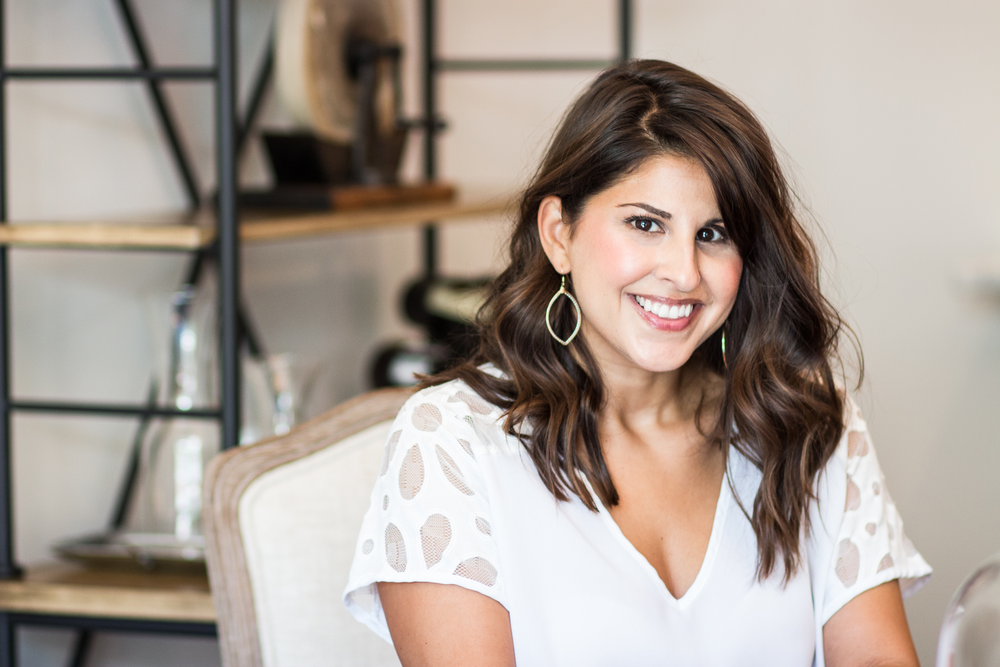The 50 States Project is a series of candid conversations with interior designers across the country about how they’ve built their businesses. This week, Greenville, Delaware–based designer Liza Nicole tells us how a Craigslist post inspired her to launch her firm, how she handled moving her business 4,800 miles to Hawaii and back, and how she has learned to simplify her idea of success.
Did you always want to be a designer?
Absolutely not. I’m an only child, and my mother is a super artsy Aquarius, and my parents always fostered that artistic side in me. My mom decorated everything—she was so good at mixing random things. One time, she found this crazy branch outside with these three branches sticking out of it, and she was like, “That represents you, me and [your] dad,” and she put it over the fireplace to create a vignette. She refinished the hardwood floors of our 1920s house. She was just a doer, and I would watch her and help, so I garnered that appreciation for making things very special and curated. But I definitely didn’t know that could be a career.
I grew up watching our family struggle financially, and that can mess with your brain. The older you get, the more you realize you don’t want to live a life where it’s so hard all the time, and you become scared of certain things. I didn’t necessarily want to be in corporate America, but it was a struggle to figure out how to be creative and still have a job where I’m not going to be stressed out about feeding myself or paying my bills. I got my degree in communications with an emphasis in public relations because that still felt creative—and from there, I essentially started working in corporate America, and I quickly started to resent it.
What wasn’t a good fit?
In the beginning, it was awesome. I worked for [education services company] The Princeton Review when it was the thing. They made a documentary about it, and I got to travel all over the country and do crazy things with the company. The median age [of the staff] was, like, 26 years old, so everybody was young and having fun. I moved to New York while working there, and I was managing the five boroughs for their test prep stuff. I loved it, but I realized there wasn’t a career path—I saw the end, if that makes sense, at a young age. And while I was having fun, it wasn’t truly satisfying me. So I started applying elsewhere, and I got the most boring marketing job at a human resources benefits consulting firm. What that offered, though, was stability. It introduced me to the idea of the work-life balance. It was a private company, and they valued, like, your life. I stayed there for nearly 13 years.
But it was just a job?
It was just a job. A bunch of things happened in my personal life, and I kept that job but ended up moving to a suburb just outside of Philadelphia, where I grew up. I was going through a divorce and listing a bunch of furniture for sale on Craigslist. Before that, my friends and family would always ask me to do things in their house—I’d go shopping with them and all that, but it was just a hobby. The first real push for me was when a woman reached out to me on Craigslist and said, “I would love to buy all of your stuff. But first and foremost, are you a decorator? Because I would love your help.” I think I charged her $75, and I just walked through every room of her house and shared what I would do. She brought me back two more times to help her. But really, it was the kick in the butt that I needed to follow my passion.I wrote her back years later, telling her, “You are honestly the reason I went back to school and figured this out.”
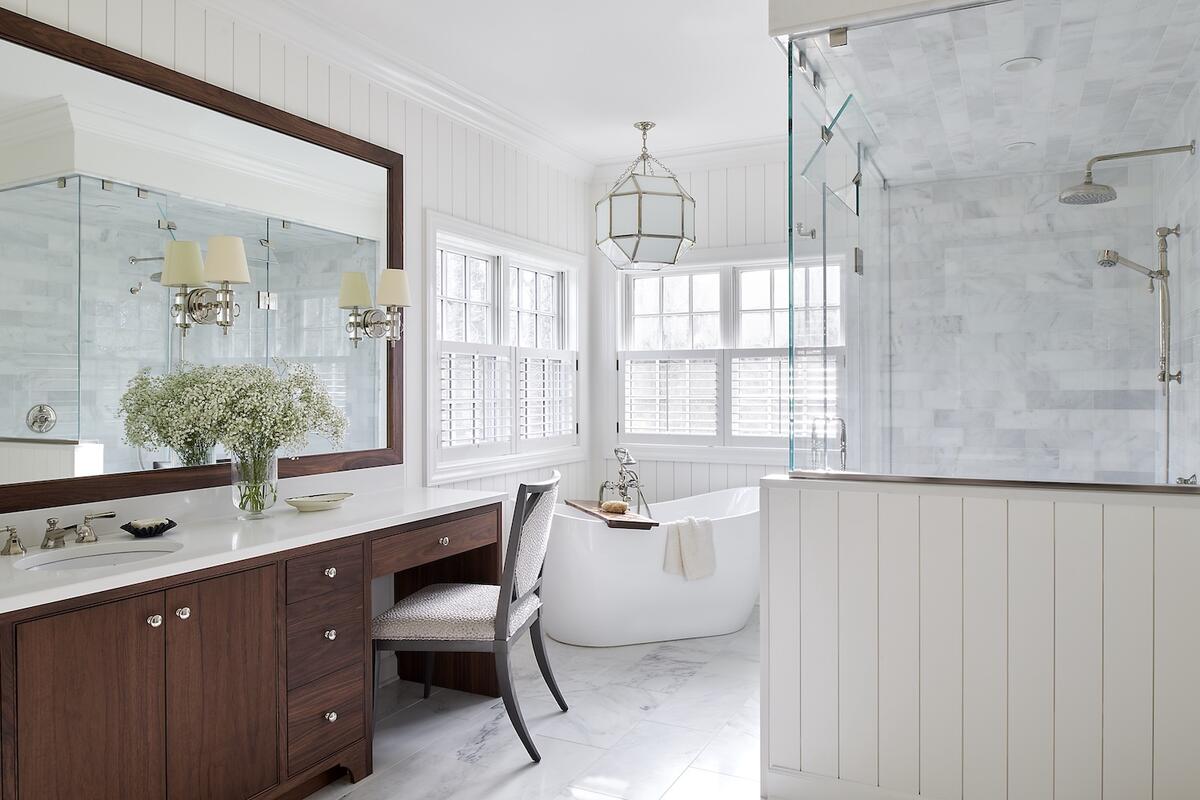
Did you go back to school immediately?
Yes—it wasn’t a long progression of thoughts. Growing up with a mother who is very spiritual and looking for signs, I was like, “That was my sign.” I had started dating my now-husband, and I told him I wanted to keep my job but go back to school at night. He was so supportive—and because I had redone his whole house, he was like, “I know you can do it, it looks great.” To have a person support your goals and dreams like that—that was a huge part of it, and I [enrolled] pretty quickly after that.
When you look back, did getting that degree help you go out on your own?
I needed it from a credibility standpoint. My father was in education, and he always hammered into me that education was so important, so I don’t think I could have done it without the degree.
Did you want your own firm right away?
Yeah, I was an idiot and did it [while] I was still at that benefits company. I just felt like, “I’m going to try it, and if I fail, I won’t necessarily lose anything because I still have a job.” I had been approached to work for other companies that were starting home divisions within their stores, but something in my gut was like, “Liza, just do it on your own.” I did all of the paperwork in 2015, and I really started doing side projects in 2016. I used my own home at first because that was all I had. And then I got lucky with some neighbors who needed some work done, and then I did some work for my mother-in-law—and then people just started talking. To date, I’ve only had clients who were referrals, or who found out about me from a story about my house in Delaware Today, which is how I got my biggest client. And then I quit my day job, and my business changed because we moved to Hawaii in 2018.
Did you restart your business there?
I basically opened up a franchise—I kept my business open in Delaware because I had clients who wanted to stay on with me, and we worked out a remote structure. [I coordinated it so that] when deliveries were starting to come, I would fly back and manage the whole installation process. And at the same time, I opened a franchise of my business out in Hawaii. It was tough. It had been a dream of ours, my husband and I, to move there. But my husband’s career there was the exact opposite of what he thought it would be, and the design world was very difficult for me to break into. I did every networking event, and it wasn’t like I had no clients, but it was certainly not the level of happiness that I had on the East Coast.
How long did you stay?
About a year and a half. We realized that Hawaii can still be our happy place, and we can still go for extended periods, but it was clearly not meant to be for us and we moved back. It was time-consuming and costly, but looking back on it, I have no regrets. We moved back two weeks before everything shut down because of COVID—we literally got back right in time and ended up living with my in-laws until we could find a new home.
Were you able to pick up where you left off?
Yes. It was a blessing—like I don’t know how or why or what, genuinely—but I really didn’t skip a beat.
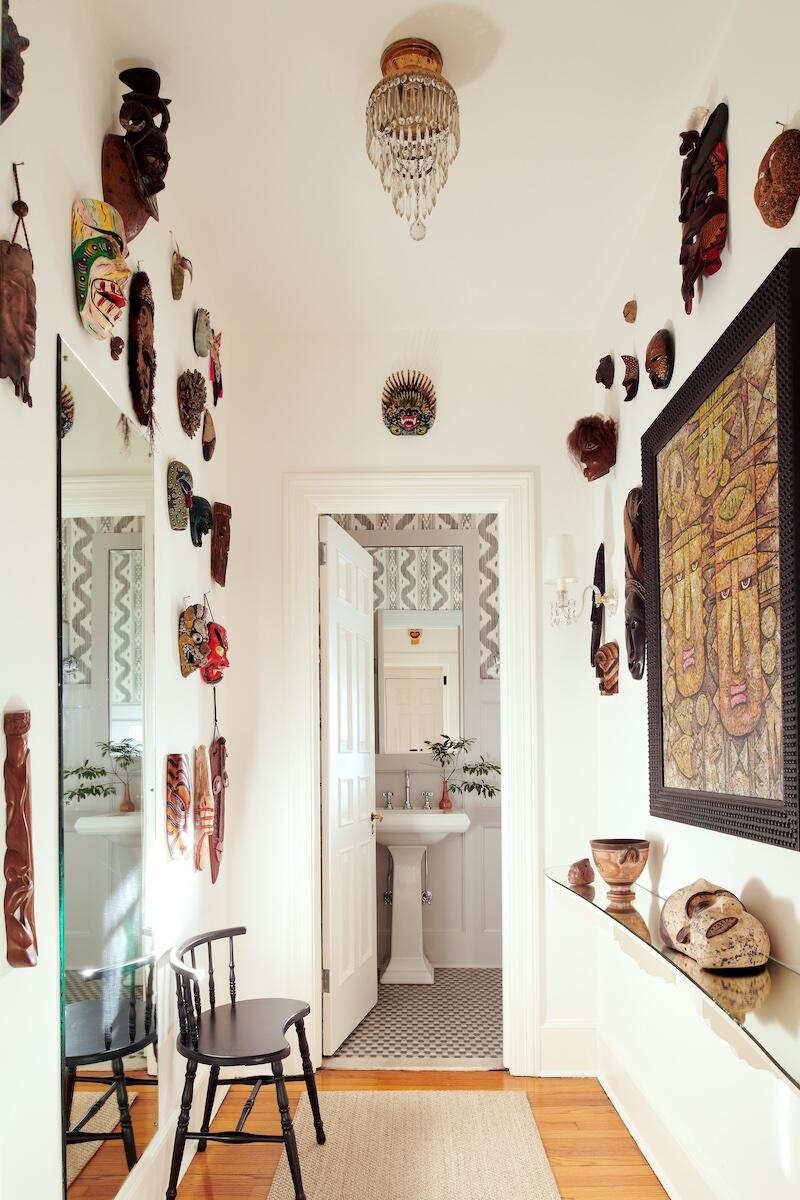
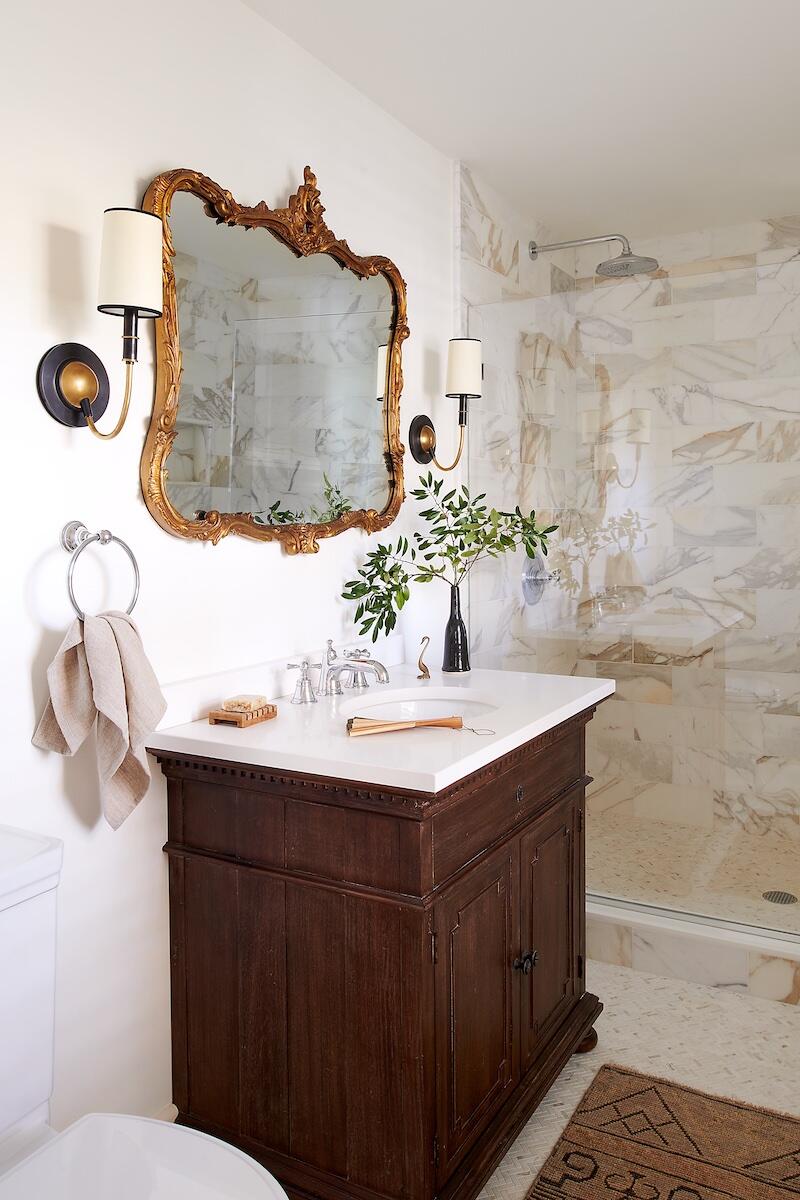
What does your business look like today?
Right now, I have five active clients. During the busiest times of the pandemic, I was up to 12 or 13, and that was insane. [My firm] is just me, so that’s a struggle. I know I need to hire a freelance person to do drawings—I just have to bite the bullet. It’s the weirdest thing: I’m not afraid of change in most things in my life, but for whatever reason, I’m super scared about growing my business in that way. I think it’s probably about control more than anything. I get nervous that if I bring on other people, we’re going to have to take on projects that aren’t really a [good] fit—or a design assistant might go too far in a direction that’s not really representative of my heart.
How do you decide what projects you say yes to?
In the beginning, you want to take everything—you want to get all the experience, good and bad—and I did that. But you quickly learn that you don’t need to take everything. So for me, the ideal client is someone who wants to enjoy the process, who wants to trust in me and trust in themselves to communicate the story of their home. Those are my ideal clients. They are usually well-traveled. They’re usually older. They have an appreciation for life and for things that have meaning, not just for things. And they want their space to feel different.
Where and how do you shop?
In Delaware, we are so close to Philadelphia, so I visit the showrooms and design center there. We also have a design center called Design Trade Resources in Devon, Pennsylvania, which is a great resource for me. They have great lines that I don’t have independent relationships with already.
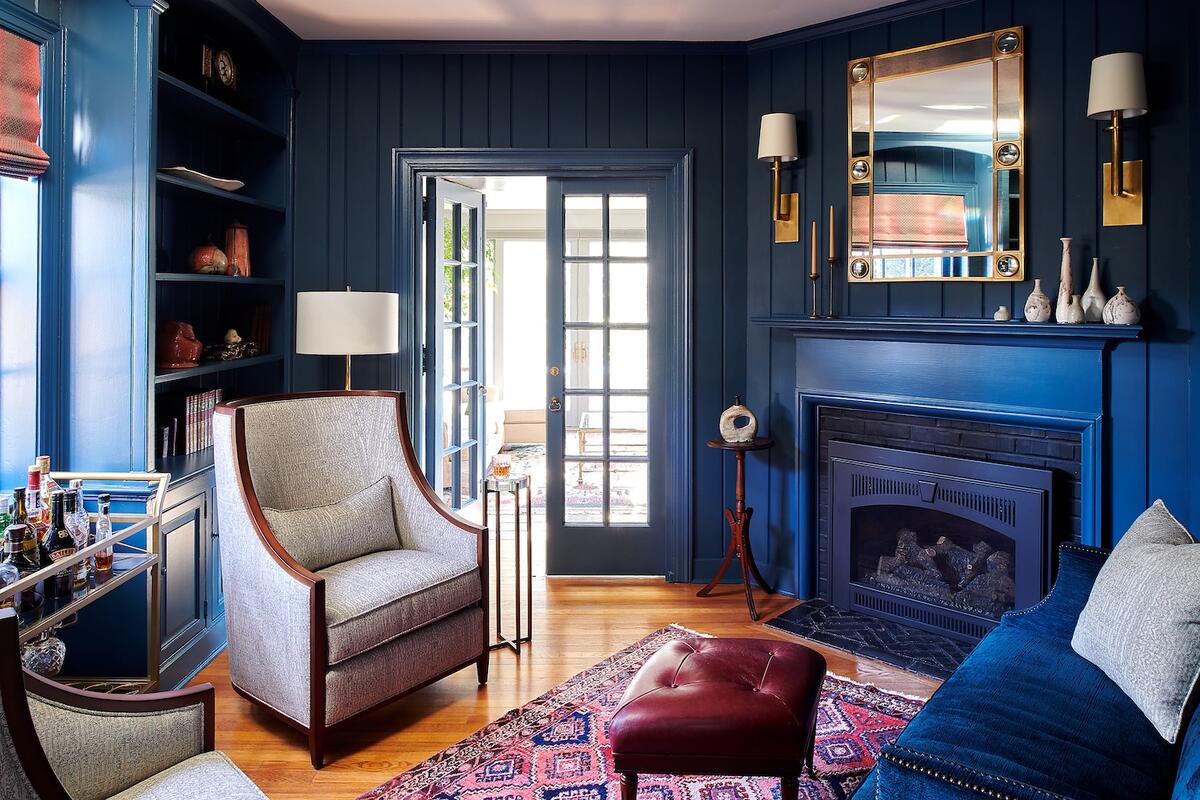
How have you approached billing for your work?
It’s brutal. I’ve always been hourly [because that was] a mentor’s advice—to do hourly and cost-plus for products. [These days] everything is so accessible and everybody wants everything so transparent. I try to be as transparent as I’m comfortable being as a business owner, but let’s be frank, I have a friend who has a home store where she sells custom furniture, and nobody’s coming in and negotiating with her on the price she’s put on that chair. But for whatever reason, sometimes your clients feel like it’s OK to do that to you.
I can tell everybody I mark things up two times, but that’s not always the case. Right? Because of my relationships with some of those vendors, my cost to buy a product is exceptional. So then I may or may not be marking up by a standard value, [but] no matter what, nobody is ever paying more than retail. And more often than not, you’re paying well below retail. So it’s a fine line.
I haven’t had too much pushback about it here on the East Coast, [but in] Hawaii, I did. In Hawaii I had to shift a little bit and do a flat fee. But no matter what, everybody’s contract is written so you can clearly see I’m gonna charge you, you know, $12,000 for these rooms, and I need 50 percent retainer upfront. Then all of a sudden, [the client is] like, “Oh, let’s just go to hourly.” It’s like, “But you wanted a flat fee, so I estimated my hours for you.” And [for] anybody who does collect the flat fee, you do the same but then you say if you go over X hours, billing then moves to X hourly. It’s in every contract anyway. So I feel like hourly from the start is just easier, and I haven’t been burned. With some clients, I’ve had issues with people paying in a timely fashion.
I charge hourly for everything leading up to procurement, and then once we get to procurement, the cost-plus [model] takes effect. I feel like so far, [this system has been] fair.
I’ve talked to so many designers lately who said that, with so much product coming in damaged or requiring more management, the margin from cost-plus pricing isn’t necessarily able to cover those hours. Is that something you’re seeing?
I agree with that wholeheartedly. What I’m learning is that it’s more about using the vendors you trust—and that you can’t guarantee anything, and that’s written in my contract. I can’t promise [a client] that something’s not going to arrive damaged, or that your things aren’t going to be delayed. None of that is in my control.
For me, one of the biggest challenges is the length of time some vendors are taking. I mean, I’m not going to name names, but I can’t wrap my head around it. Most of my vendors have gotten back to as good as they were pre-COVID with lead times, or even better. But I’m especially struggling a lot with one particular vendor—and they are a huge, huge vendor for me. They’ve been around forever, and they have a reputation for their amazing quality—but man, [there’s this one] ottoman. I put in this ottoman order in August, and at first they said it’ll be done in June. That’s a long lead time, but OK. Now they pushed me back to August. A year, for an ottoman? It’s insane. And look, I used to buy from them a lot, but I think I have to pull back from using them.
I’m guessing everything else for that project is in, right?
Oh, we’re done—except for the beautiful 52-inch-by-36-inch ottoman. Normally, you can’t cancel, but they gave me that option because they’re pushing me back again, and I took them up on it. I can get something else custom, or even not totally custom, that’ll fit the space beautifully, and get it to my client within a month. Most of my clients are very aware that lead times are still in the 12- to 16- to 18-week range. They understand all that. But a year? At this point? No.
The other struggle is with delivery and damages. Even the really good receivers in our area [have declined in quality]. Lately, I’ve found that this moving company—they’re not even true receivers—have done a far better job than receivers that we’d have to pay $3,000, plus tip. I’ve been trying to get creative on deliveries.
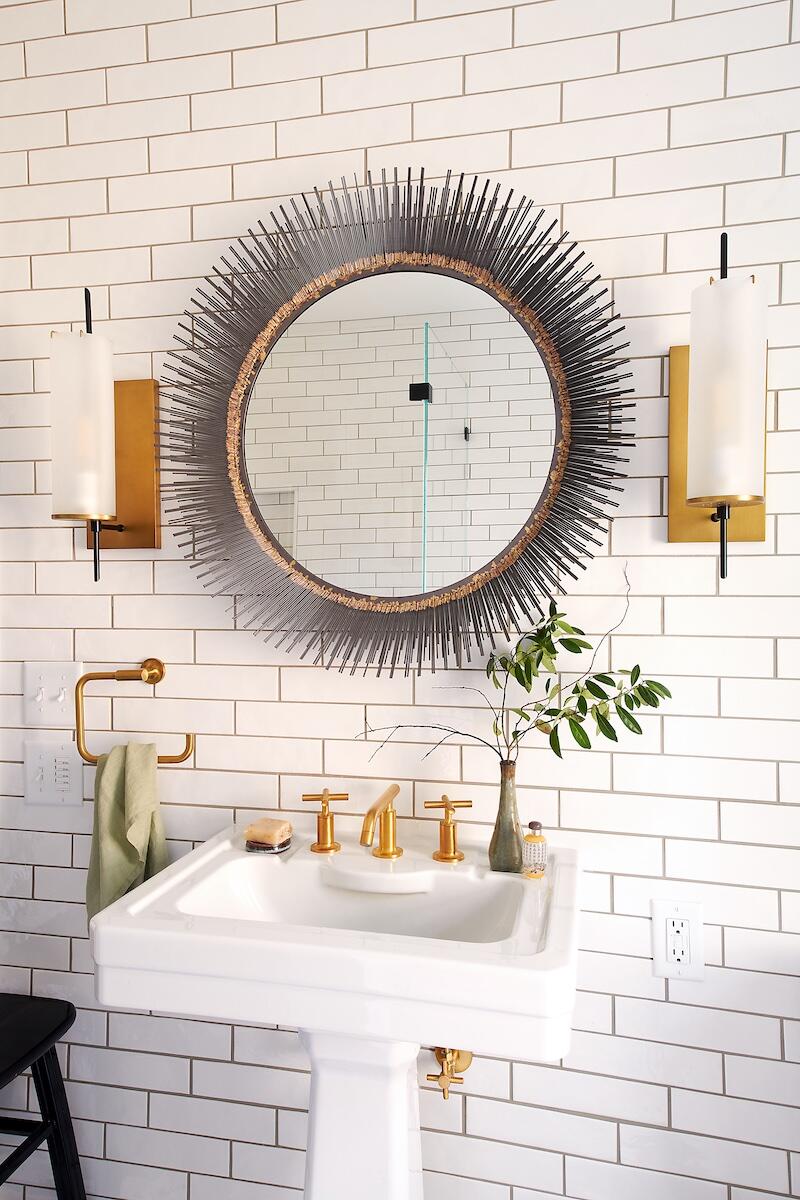
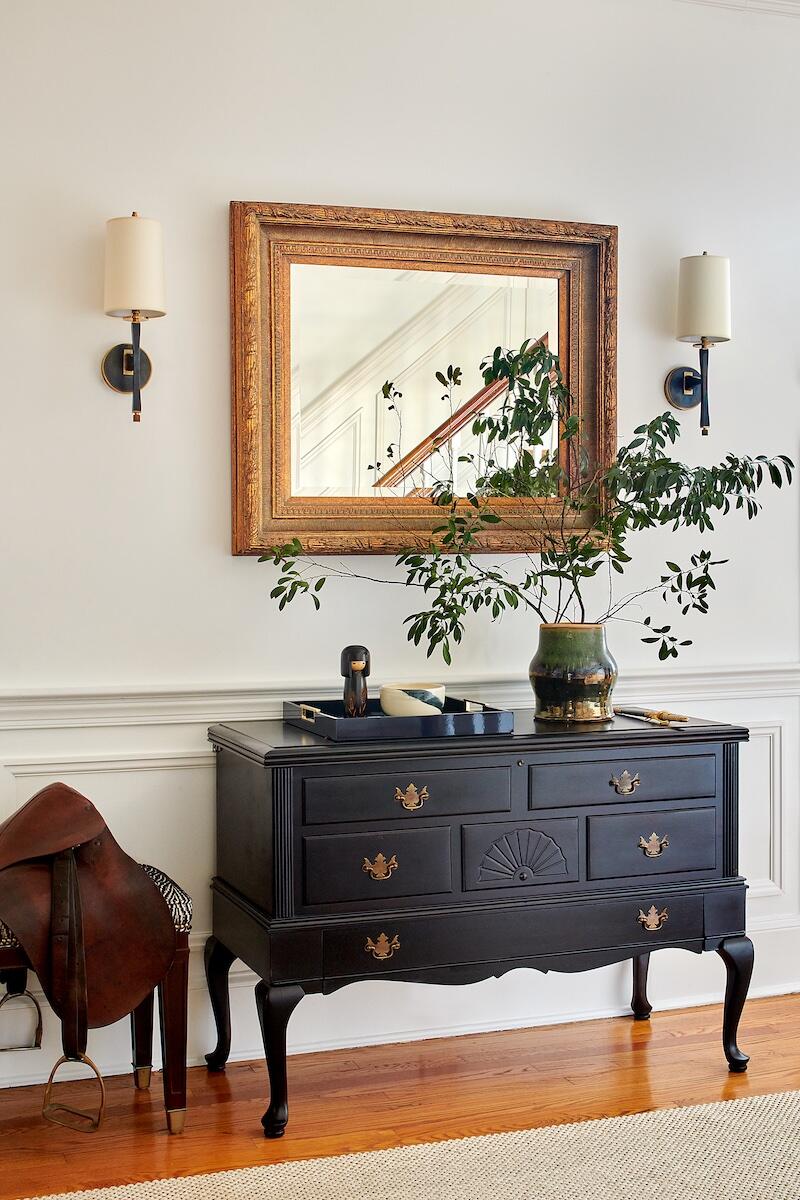
When you look back to starting your business, what is the biggest thing you know now that you wish you had known from the start?
Honestly, that you don’t have to be anything other than what you are and exactly where you are in life at that moment. I know that’s a very broad statement, but if you don’t want to have a career that is beyond your neighborhood, you don’t have to. If you don’t want to have Instagram, you don’t have to. If you never get interviewed by an awesome [publication] like Business of Home, it’s OK. It doesn’t mean that you aren’t rocking out and doing the best that you can and, you know, doing what brings you joy.
When I started, I was scared because this industry is showy. I was scared that I wouldn’t get the attention that would garner clients. You have to figure out how to navigate the world that we live in, which is this electronic, hyperaccessible, visual world when it comes to design. So you have to figure out how to stay true to yourself. Looking back, I wish I didn’t spend so much time thinking about how I needed to fit in, and [that instead] I just kind of did it my way. That’s more or less what I’m doing now.

What does success look like to you today?
That’s hard to define. Right now, I’m thinking a lot about this concept of, does victory always mean happiness? You can go through significant life events, and your perspective on success can change. I’m trying to make sure my perspective on success is always grounded in simple happiness and love—and if I can’t have those things and run a business, then I shouldn’t be running the business.
Has that always been true to you? Or is that an answer and a truth that you found over time?
I think it’s age. As we grow, we change, and we have amazing highs and very, very low lows—I’ve had both, and I think many people have both. My father-in-law has this saying: “Good players adjust.” For some reason, that one sticks with me. It’s true, you have to adjust in life. I think fundamentally my mom has always driven into me that life is so simple. We make it very complicated and about a lot of things that really don’t matter, but you don’t see that usually when you’re young because you’re driven by all these external forces. And especially in this day and age, everything is everywhere, and [it can feel hard to] keep up. But I think [with] age and having that grounded foundation [from my] upbringing and [the people who taught me] about what life really means—it starts to click more and more.
To learn more about Liza Nicole, visit her website or find her on Instagram.
















